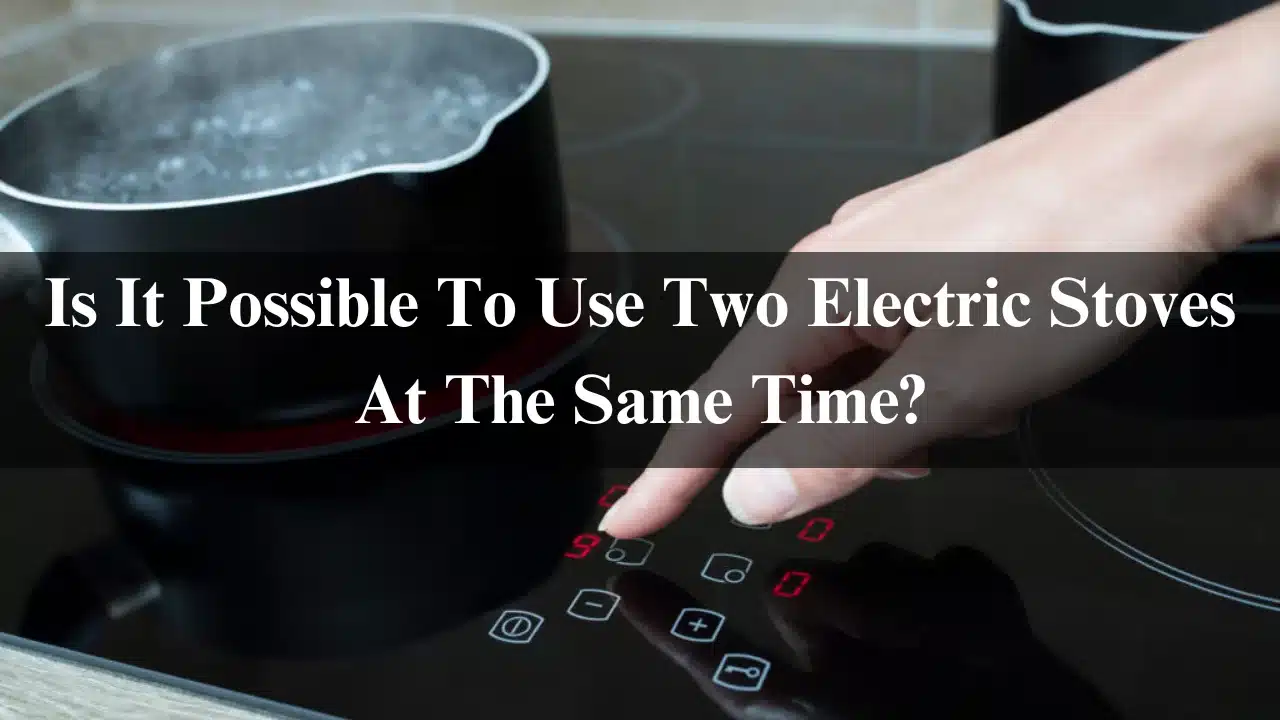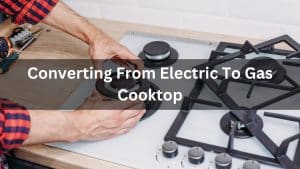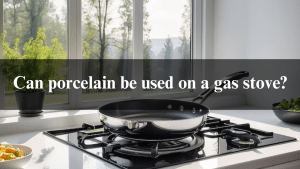Have you ever found yourself juggling pots and pans, desperately trying to whip up a feast for family or friends on just one electric stove? If so, you’re not alone! Many home chefs need more cooking space when preparing multiple dishes. But what if we told you there’s a way to double your culinary capacity without breaking a sweat?
In this blog post, we’ll dive into the exciting world of using two electric stoves simultaneously. From maximizing your kitchen efficiency to exploring safety tips and tricks, get ready to elevate your cooking game—because who said you can’t have it all when it comes to delicious meals? Let’s turn up the heat and find out how dual stovetop cooking works for you!
Table of Contents
What are the basics you need to know before trying two electric stoves?
Electric stoves have become a common household appliance, providing convenience and efficiency in the kitchen. With technological advancements, using two electric stoves simultaneously is possible.
This can be particularly useful when cooking for larger families or hosting parties. However, you need to know some important basics before attempting to use two electric stoves simultaneously.
Power Supply: One of the most crucial factors to consider before using two electric stoves is your power supply. Electric stoves require a significant amount of electricity to function, and having two running at once will increase your energy consumption even more. It is essential to ensure that your electrical wiring and circuit breaker can handle the load of two stoves without causing any overload or tripping issues.
Outlet Requirements: Each stove typically requires a dedicated outlet with a designated voltage capacity. Before attempting to plug in both stoves, make sure you have adequate outlets available and that they meet the required voltage capacity for each stove.
Distance Between Stovetops: It’s crucial to consider their distance when using two electric stoves simultaneously. The heat generated by one stove could affect the other’s performance if they are too close together. Therefore, leaving at least 10-12 inches of space between each stove is recommended for optimal functioning.
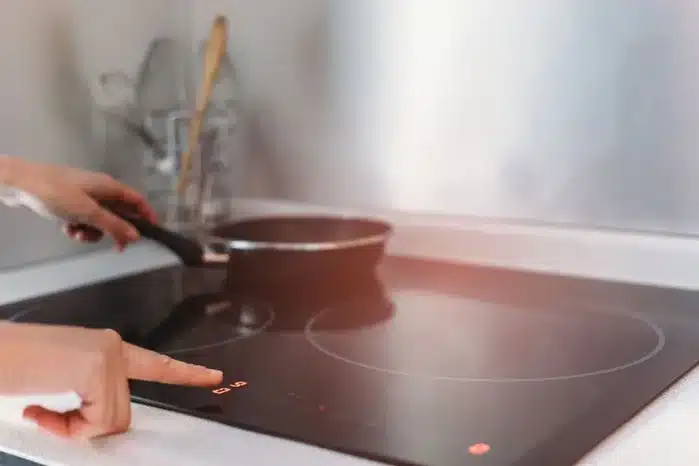
Pan Size Compatibility: Another factor to consider when using two electric stoves is whether your pans are compatible with both units’ size and shape. Some models may have different-sized burners or only accommodate specific types of pots or pans. It’s important to check this beforehand so you don’t end up with mismatched cookware.
Hazardous Materials Storage: While cooking on multiple electric stoves can be convenient, it also increases the risk of accidents involving hazardous materials such as oils or cleaning products being stored near the heat source. To avoid potential dangers, keep any flammable or hazardous materials away from the stovetops.
Time Management: Using two electric stoves also means dividing your attention between them while cooking. It’s crucial to have a well-planned cooking schedule and constantly monitor both stoves’ progress to ensure that neither dish burns or overcooks due to negligence.
With the right preparation and precautions, using two electric stoves simultaneously is possible. Before attempting this task, it’s essential to consider factors such as power supply, outlet requirements, distance between stovetops, pan size compatibility, storage of hazardous materials, and time management. Proper planning and attention allow you to utilize two electric stoves simultaneously for a more efficient cooking experience.
Can You Pull Off Using Two Electric Stoves at Once?
Using two electric stoves simultaneously can be daunting for some and exciting for others. With the increasing popularity of multi-course meals and cooking as entertainment, many people wonder if it is possible to have two electric stoves running at once in their kitchen.
The answer to this question is yes. You can use “two electric stoves at the same time”. However, certain factors need to be considered before attempting this.
Firstly, it is important to note that not all kitchens have enough power supply to support two electric stoves running at full capacity. It is crucial to check the maximum wattage each stove requires and ensure that your kitchen’s electrical system can handle the load. If not, you may risk overloading the circuit and causing a power outage or fire hazard.
Another factor to consider is the space available in your kitchen. Even if your kitchen has enough power for two electric stoves, physically fitting them into the space may prove difficult. Ensure that there is enough counter space for both stoves and that they are not too close together, which could pose a safety hazard.

When using two electric stoves at once, you must distribute your workload evenly between them. Trying to cook large quantities on both stoves simultaneously may result in uneven cooking or burnt food. It is best to plan and consider which dishes require more attention or longer cooking times so you can assign them accordingly between the two stoves.
Furthermore, proper ventilation is vital in a kitchen with multiple stoves. The extra heat generated by two stoves operating can quickly make the kitchen uncomfortable and stuffy. Ensure adequate air circulation through open windows or by turning on exhaust fans.
Keep an eye on both stoves while they are in use. Accidents can happen quickly, and it is essential to be alert and attentive when using any cooking appliance, especially when two are in operation at once.
Using two electric stoves simultaneously is entirely possible with the right precautions. Ensure that your kitchen has enough power supply, ample space, and proper ventilation, and carefully plan out your cooking tasks. With a little extra effort and attention, you can successfully use two electric stoves simultaneously and impress your guests with a delicious multi-course meal.
What is the electrical load do you need to understand?
Before we answer our main question, it’s important to understand what an electrical load is and how it affects the use of electric stoves. An electrical load refers to the amount of power drawn from a circuit or electrical system. This power is measured in watts (W) and can vary depending on the type and number of appliances used.
It’s crucial to consider their individual electrical loads when using electric stoves. Each stove has a specific wattage rating that indicates how much power it requires to function properly. For example, a typical electric stove may have a wattage rating of 1500W, while another may have 2000W.
So why does this matter? If you try to use multiple electric stoves simultaneously without considering their individual wattage ratings, you could potentially overload your circuit, cause a power outage, or even damage your appliances.
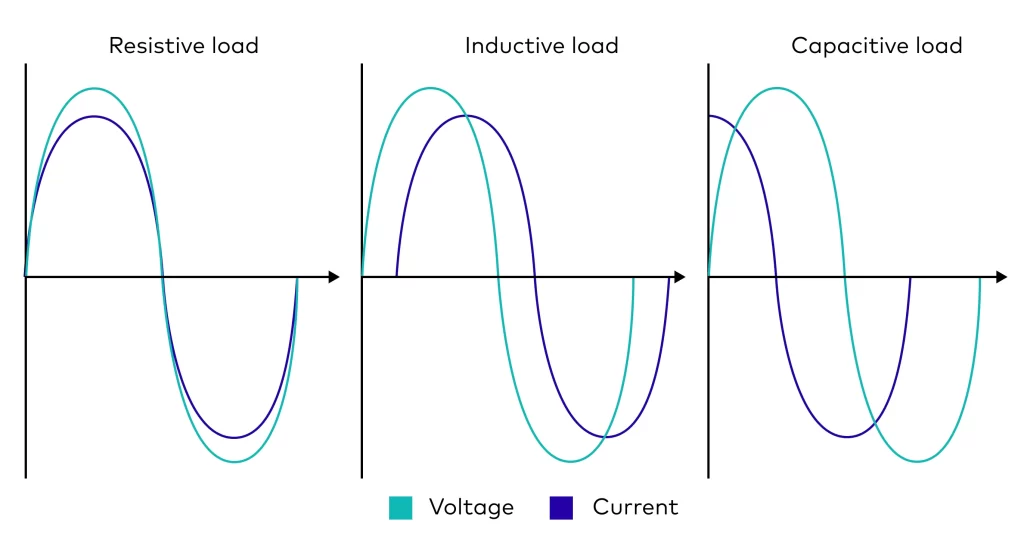
To better understand this concept, let’s look at an analogy. Think of your home’s electrical system as a water pipe with different faucets connected to it. Each faucet represents an appliance in your home – like your refrigerator, TV, or electric stove – and each has its flow rate or “wattage.” If you turn on too many faucets at once and try to draw more water than the pipe can handle, there will either be low pressure coming out of each faucet or, even worse, no water.
Understanding the Electrical Load of a Single Electric Stove:
Electric stoves have become a staple in most households, offering a convenient and efficient way to cook our meals. However, many wonder if using two electric stoves simultaneously is possible. To answer this question, we must first understand the electrical load of a single electric stove.
The electrical load of an appliance refers to the amount of power it consumes when in use. In simpler terms, it is the amount of electricity needed for an appliance to function properly. The unit is used to measure electrical load in watts (W). Every household has a limited capacity for how much electricity can be drawn at once, known as the circuit’s amperage or amp rating.

A standard electric stove typically requires 240 volts and draws around 30 amps when all its burners and oven are in use. This means that a single electric stove’s total wattage or electrical load can reach up to 7,200 watts (240V x 30A = 7,200W). This high wattage consumption is due to the heating elements used in electric stoves, which require more energy than other kitchen appliances.
Let’s consider using two electric stoves simultaneously. If both stoves have similar specifications and are being used at full capacity (all burners and ovens), their total wattage will be around 14,400 watts (7,200W + 7,200W = 14,400W). This exceeds the average household’s amperage limit and could trip the circuit breaker or cause an overload.
Powering Two Stoves Simultaneously
Using two stoves simultaneously can be incredibly convenient when cooking meals for a large family or hosting a dinner party. However, many wonder if it is possible to power two electric stoves simultaneously without causing any electrical problems.
The answer is yes. It is possible to use two electric stoves simultaneously. However, certain factors need to be considered to ensure safe and efficient usage.
First and foremost, it’s important to check your home’s power capacity. Each stove requires a certain amount of electricity to function properly. If your home’s electrical system does not have enough capacity to support two stoves, trying to use them simultaneously can overload the system and cause a power outage or damage your appliances.
To determine if your home has enough power capacity for two stoves, consult an electrician. The electrician will assess your current electrical setup and advise on whether any upgrades are needed.
Another factor to consider is the type of stove you are using. Some electric stoves require more energy than others, so it’s important to check the wattage rating of each stove before attempting to use them together. Ideally, both stoves should have similar wattage ratings to work efficiently together.
Additionally, ensure that both stoves are plugged into separate outlets. Using an extension cord or splitting one outlet between two stoves can lead to overloading and potential safety hazards.
Electrical Infrastructure
Electrical infrastructure plays a crucial role in determining whether using two electric stoves simultaneously is possible. This includes understanding the power supply, wiring, and circuitry of your home or building.
Firstly, knowing the power supply available for your home is important. Most homes have a standard 120-volt power supply, while some may have a higher voltage of 240 volts. The difference between these two voltages is significant when operating multiple appliances simultaneously.
A standard 120-volt outlet can typically handle up to 15 amps of electricity, while a 240-volt outlet can handle up to 30 amps. Using two electric stoves on a 120-volt outlet may overload the circuit and trip the breaker, resulting in loss of power and potential damage to the appliances.
Wiring is also essential in determining whether you can use two electric stoves simultaneously. Older homes may have outdated wiring that cannot support the demand for multiple high-powered appliances running simultaneously. It is recommended to have an electrician inspect your wiring and make any necessary upgrades before attempting to use two electric stoves at once.
Your home’s circuitry must also be considered in addition to wiring. A typical kitchen stove requires a dedicated circuit with a specific amperage rating. Suppose you attempt to plug both stoves into one outlet or share a circuit with other high-powered appliances like refrigerators or microwaves. In that case, you risk overloading the circuit and causing it to trip.
Another factor to consider is how far apart the outlets are from each other and where you plan to use the stoves. Extension cords or adapters can pose safety hazards and increase the risk of overloading circuits.
If all conditions meet safety standards and allow for proper electrical usage, it is possible to use two electric stoves at once. However, it is always recommended to consult a licensed electrician before attempting to do so, as they can assess your home’s specific electrical infrastructure and advise on the safest and most efficient way to operate multiple stoves.
While it is possible to use two electric stoves simultaneously, it is crucial to consider your home’s electrical infrastructure. Understanding the power supply, wiring, circuitry, and safety precautions will ensure that you can safely and efficiently use multiple electric stoves without causing damage or risking potential hazards.
What Power Do Two Electric Stoves Require?
One key factor when using multiple electric stoves is power consumption. The amount of power required for an electric stove to function depends on its size and features. Most standard electric stoves require between 2400 and 3600 watts of power to operate. This means that using one electric stove could already be consuming a significant amount of your household’s electricity.
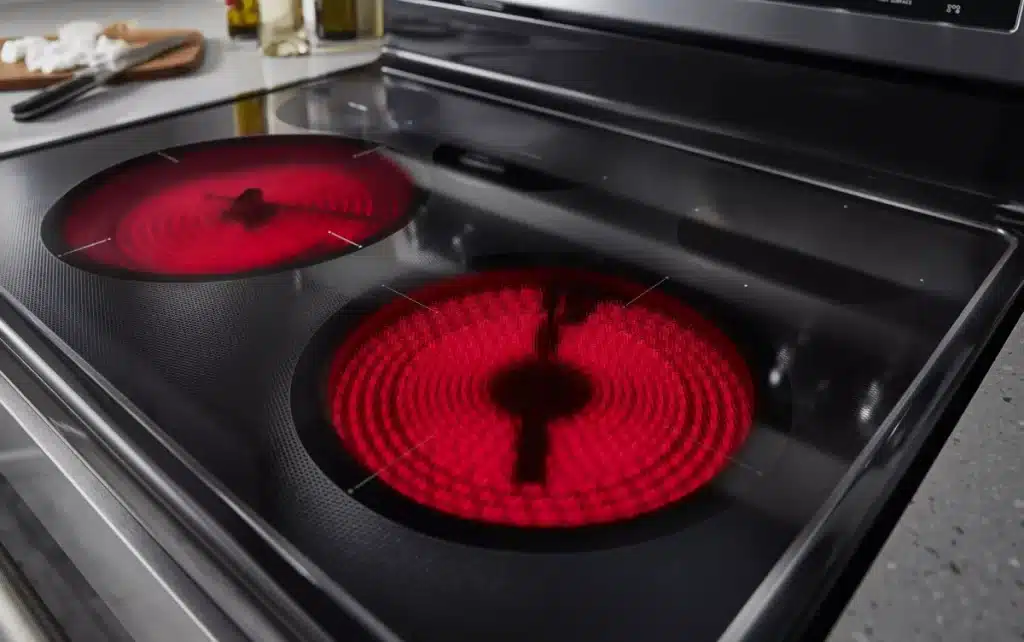
Do You Need a Dedicated Circuit for Each Stove?
One of the most common questions about kitchen appliances is whether or not a dedicated circuit is needed for each stove. To answer this question, we must first understand a dedicated circuit and why it may be necessary.
A dedicated circuit is a specific electrical wiring that supplies power to only one appliance or device. This means that the circuit is solely responsible for providing electricity to that particular appliance and nothing else. In other words, if you have two stoves running on separate circuits, they will not share any electrical load with other appliances in your kitchen.
The main reason for having dedicated circuits is safety. When an appliance draws too much power from a shared circuit, it can cause the breaker to trip or even result in an electrical fire. This risk increases when using high-powered appliances such as electric stoves, which typically require 240 volts of electricity.
Do you need a dedicated circuit for each stove? The short answer is yes. It is highly recommended that each electric stove have a separate dedicated circuit to ensure safe operation and avoid overloading the electrical system.
How do you upgrade your wiring (If necessary)?
If you’re experiencing frequent power outages or tripped circuits when using your electric stoves simultaneously, it may be a sign that your wiring needs an upgrade. Upgrading your wiring can support the use of multiple electric stoves simultaneously and improve the overall safety and efficiency of your electrical system.
The first step in upgrading your wiring is to assess its current condition. You can check for visible damage, such as frayed wires, burn marks, or loose connections. If you notice any of these issues, addressing them immediately is important as they can lead to more significant problems.
Next, determine the age of your wiring. Older homes may have outdated wiring that needs to be equipped to handle the demands of modern appliances like electric stoves. If your home is over 20 years old and has never had its wiring updated, it’s highly recommended to consider an upgrade.
Once you’ve established that an upgrade is necessary, it’s best to hire a licensed electrician to do the job. Attempting to upgrade your wiring without proper knowledge and experience can be dangerous and may result in further damage or electrocution.
Your electrician will begin by shutting off all power to your home before starting any work on the wiring. They will then replace old wires with newer ones better suited for handling higher loads of electricity. The new wires will also be insulated properly for added safety.
Do You Need a Special Setup for Two Electric Stoves?
When you have two electric stoves in your kitchen, the question of whether you need a special setup may arise. The answer is it depends.
Firstly, if you are using two standard-sized electric stoves placed side by side, no special setup is required. These stoves can be plugged into separate outlets and used simultaneously without any issues. However, some factors could affect their performance.
One factor to consider is your home’s power supply. Most homes have enough electrical capacity to handle “two electric stoves at the same time”. However, if you live in an older home with outdated wiring or a limited electrical capacity, using both stoves simultaneously may cause them to trip the circuit breaker. In this case, it would be best to consult an electrician to assess your home’s electrical system and make any necessary upgrades before using two electric stoves simultaneously.
Another aspect that could impact using multiple electric stoves is the type of stove itself. Some models require a higher voltage outlet than others, so specific outlets need to be installed for each stove. It is essential to check your stove model’s voltage requirements before attempting to use two at once.
Furthermore, a special setup might be needed if you plan on using one large and one small stove together. This is because these stoves often have different wattages and require different power from their respective outlets.
Stovetop vs. Range: Does It Make a Difference?
Stovetops and ranges are two common electric stoves in households worldwide. While both serve the same purpose of cooking food, there are some noticeable differences between the two. Stovetops are standalone units placed on a kitchen counter, while ranges are larger appliances that combine an oven and stovetop in one unit. Some may wonder if using one type over the other makes a difference in efficiency and effectiveness. In this section, we will explore the key differences between stovetops and ranges to determine if it truly makes a difference in which type you use.
One of the main differences between stovetops and ranges is their size and layout. Stovetops tend to be smaller and more compact, with limited space for cooking multiple dishes. On the other hand, ranges have larger surface areas with multiple burners, allowing for more versatility when cooking different dishes simultaneously. This can be especially helpful when preparing large meals or hosting gatherings where multiple dishes must be cooked simultaneously.
Another notable difference is in terms of temperature control. With a range, each burner typically has its temperature control knob or button, giving users precise control over the heat level for each burner. On the other hand, stovetops usually have a single temperature control dial for all burners combined. Adjusting the heat level may require some trial and error to get just right.
How to Ensure Energy Efficiency When Using Two Electric Stoves
When using two electric stoves simultaneously, it is important to ensure energy efficiency to save on electricity costs and reduce your carbon footprint. Here are some tips and tricks for maximizing the energy efficiency of using two electric stoves simultaneously.
Managing Energy Usage Across Two Stoves
If you have ever cooked a big meal for a large group of people, you know the struggle of using just one stove to prepare all the dishes. It can be time-consuming and frustrating as you juggle multiple pots and pans, trying to make everything fit in the limited cooking space. This is where having two electric stoves can come in handy.
But can you use two electric stoves simultaneously without overloading your electricity or causing any safety hazards? The answer is yes, but it does require careful energy usage management.
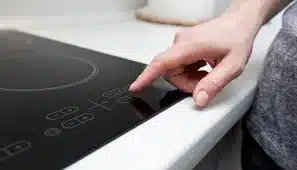
One key thing to keep in mind when using two electric stoves simultaneously is the wattage or power consumption of each stove. Most standard household stoves have a wattage range of 1,200-2,400 watts per burner. This means that if both burners are being used at their maximum capacity, they could potentially consume up to 4,800 watts combined. However, this number may vary depending on the specific model and brand of your stoves.
Table: Electrical Load Comparison Between Single and Dual Electric Stoves
| Electric Stove Setup | Power Consumption (Watts) | Circuit Requirements (Amps) |
| Single Stove | 3,000 – 12,000 watts | 30 – 50 amps |
| Dual Stoves | 6,000 – 24,000 watts | 60 – 100 amps |
Related Articles:
How many burners are there on an electric stove? 5 Types
What’s The Top Best Electric Cooktop With Downdraft?
Is A Magnetic Induction Stove Better Than A Traditional Stove?
Do all electric stoves have the same problems?
Conclusion
In conclusion, using two electric stoves simultaneously is possible with the right precautions. Key factors to consider include your home’s electrical capacity, proper circuit requirements, stove spacing, and careful monitoring during use. By ensuring your wiring can handle the load and using the stoves safely, you can easily double your cooking capacity and enjoy a more efficient kitchen experience.
FAQs
1. Do I need an electrician to run two stoves?
Yes, especially if you’re unsure about your home’s wiring. An electrician can confirm whether your circuit can handle the load.
2. Can I use one stove’s outlet for both stoves?
No, each stove should have its dedicated outlet to prevent overloading circuits.
3. Is it safe to run two electric ovens at the same time?
Yes, as long as your wiring and circuits are designed to handle the power consumption of both appliances.
4. Will using two stoves increase my electricity bill significantly?
Running two stoves will increase energy consumption, but choosing energy-efficient models can help reduce costs.

